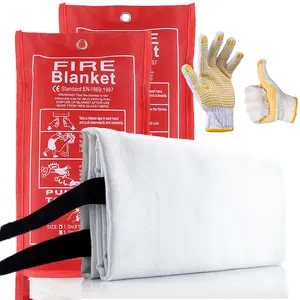

Funas Heat Resistant Or Thermal Insulation Sheet High Temperature Insulator Sheet Acoustic Aluminum Foil Foam Insulation Sheet


BSI Certificated Fire Retard Emergency Fire Blanket Kitchen 1m X 1m Fiberglass Cloth Laboratory Fire Blanket

















Self-heating fabric represents a cutting-edge category in textile innovation, designed to provide warmth without the need for external heating sources. This textile technology incorporates materials that generate heat through exothermic reactions or the conversion of body energy into heat, offering a smart solution for colder climates and outdoor activities.
The core of self-heating fabric technology lies in its unique composition. Typically, these fabrics are embedded with elements like carbon fibers or minerals that can retain and reflect body heat, thus maintaining warmth. Variants include fabrics integrated with phase change materials (PCMs) that absorb and release heat according to temperature changes. Users can find a range of types from lightweight options suitable for activewear to heavier weaves ideal for bedding and upholstery.
The versatility of self-heating textiles extends to various applications. Outdoor enthusiasts can find apparel that keeps them warm without the bulkiness of traditional insulation. In the home, these fabrics are used in products like thermal curtains or bedding, providing an extra layer of warmth during cold nights. The utility of these fabrics also spans into the realm of wellness, where they are employed in therapeutic clothing items to aid in muscle relaxation and pain relief.
Self-heating materials are lauded for their thermal properties and sustainability, especially when made from recycled polyester. These fabrics offer the advantage of being lightweight and flexible, unlike conventional heated garments that may require wires or battery packs. Additionally, the moisture-resistant nature of these fabrics makes them suitable for a variety of weather conditions, enhancing their functionality and user comfort.
The production of self-warming fabrics often involves sustainable practices, with a growing number of options made from recycled materials. The use of such eco-friendly materials not only reduces waste but also aligns with the increasing consumer demand for sustainable products. Furthermore, the durability of these fabrics means a longer product lifespan, contributing to a reduction in textile waste.
Selecting the appropriate self-heating fabric requires consideration of its intended use. For outdoor apparel, waterproof and breathable qualities are paramount, while for household items like cleaning cloths, microfiber options offer superior cleaning efficiency. Patterns and textures vary, providing a range of aesthetics to meet different design preferences. When sourcing these innovative fabrics, it is essential to consider the specific attributes that align with the end product's requirements.